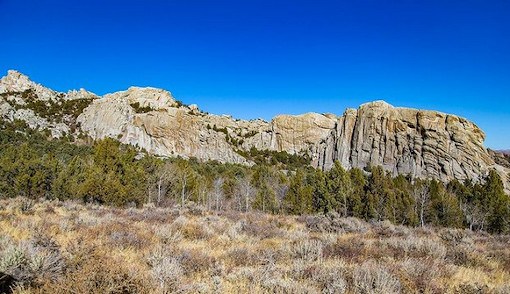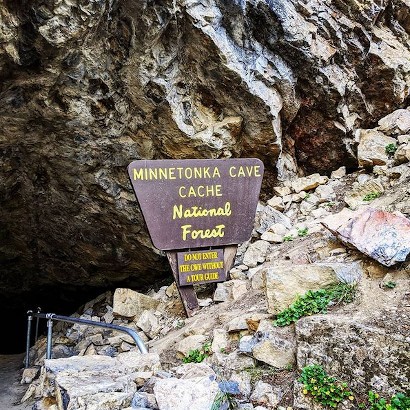Idaho is nicknamed The Gem State. The state's nickname alone should be enough to excite any rock collector. Idaho is more than worthy of being called The Gem State as beautiful gems and minerals can be found all over the state.
Below, we'll review the most popular rockhounding sites in Idaho. We'll also share some helpful tips to give you an advantage over other rockhounds visiting the state. In addition, we'll review the laws which govern rock collecting in Idaho.
Laws
Rockhounding is governed by some strict laws. Some of these laws vary from state to state, so you should familiarize yourself with the specific laws of any state that you plan on visiting.
On public land managed by the Bureau of Land Management (BLM) your collections are limited to 25 pounds per day or 250 pounds per year. Rocks discovered must be kept in your personal collection. Selling your finds for financial gain is prohibited.
Hobbyist rockhounds are forbidden from using anything other than small, handheld tools on many of Idaho's rockhounding sites.
Rockhounds are expected to respect the land they are searching on. As such, they are required to refill any holes they make during their search. Littering is, of course, forbidden and carries a possible fine of $1,000. Collecting is discouraged in areas that have high wildlife populations. It's also frowned upon in crowded spaces. This is why we suggest rockhounding on beaches in the early morning.
Rockhounding is permitted on almost all of Idaho's public land. However, there are some public sites on which the activity faces additional restrictions or is forbidden entirely. For this reason, you should contact the governing body of any site you plan to visit to ensure that you won't be violating any laws.
You can avoid restrictions by rockhounding exclusively on private property. However, you will need to obtain the permission of the property owner, preferably in writing.
Best Spots
The four spots listed below will give you the best chances for success.
City of Rocks National Reserve

Just as Idaho is appropriately referred to as The Gem State, this Cassia County national reserve is named The City of Rocks. As its name suggests, the City of Rocks boasts a magnificent landscape that is made up of gigantic rock formations. These formations are largely composed of granite. Unsurprisingly, this means that granite is the most commonly uncovered rock in the reserve.
Rocks National Reserve rests right on the Utah border. For this reason, we also encourage rockhounds based in Utah to visit whenever they have the opportunity.
Emerald Creek Garnet Area
Idaho is renowned among rockhounds for its high quality garnets. Impeccable garnets are regularly discovered throughout the state. They are particularly common in the Shoshone County town of Idaho. This inspired the establishment of the Emerald Creek Garnet Area. This is a commercial rockhounding site primarily dedicated to garnet discovery. The gravel on the site has been deliberately cultivated due to its large garnet content. Meanwhile, two on-site sluice boxes expedite the hunt and virtually guarantee success.
Spencer Opal Mines
Like Emerald Greek Garnet Area, the Spencer Opal Mines are a commercial rockhounding site. As a commercial site, the mines are free from most of the rules which govern rockhounding in the rest of Yellowstone National Park. The mines exclusively produce opal, but the lack of variety is more than made up for by the high quality of the rocks. Unlike many other commercial rockhounding sites, the Spencer Opal Mines do not provide equipment so be sure to bring your own rockhounding tools when you visit.
Minnetonka Cave

Minnetonka Cave rests within the Caribou-Targhee National Forest. The forest is, in its own right, a regular producer of valuable specimens. However, Minnetonka Cave holds particular allure for rockhounds. Much of the cave's popularity stems from the variety of discoveries which have been made inside of it. Over the years, rockhounds have reported finding stalagmites, helictites, and stalactites in Minnetonka Cave. It's also not uncommon to uncover fossils at the site. The cave's walls are practically lined with brachiopods, horned coral, bryozoans, and more!
Tips
The tips listed below can help you achieve more success.
- Try to plan your trip for late August or early September. During these times, Idaho's weather is dry and warm, creating the perfect environment for prolonged rockhounding sessions. Visit the state during midsummer and your hunt will likely be hampered by tourists and high temperatures.
- There are a number of rockhounding clubs and organizations operating throughout Idaho. We suggest getting in touch with one or more of these organizations before visiting the state. They can help you plan your trip and may even set you up with a hunting partner when you arrive.
- Many of Idaho's popular rockhounding sites are in relatively remote parts of the state. This means they can be a challenge to reach via public transport. For this reason, we recommend traveling via car.
- For hobbyist rockhounds, small handheld tools are always preferable to their larger alternatives. There are numerous reasons for this. For starters, handheld tools are easier to transport from site to site. They are also less taxing on your arms and shoulders. This makes them better for extended hunts. It's also worth noting that the use of larger rockhounding equipment is forbidden on many American rockhounding destinations.
Conclusion
Idaho is more than deserving of its status as the Gem State. For decades, it has presented rockhounds of all levels with ample opportunities to find rocks. Idaho also offers a variety of different specimens to uncover. From minerals to fossils, this state has everything a rockhound could ask for. With such vast variety, Idaho is a great place to visit if you're looking to significantly expand your collection in a single hunt.
Neighboring states also offer good opportunities. We recommend rockhounding in Montana, rockhounding in Oregon, and rockhounding in Wyoming.
